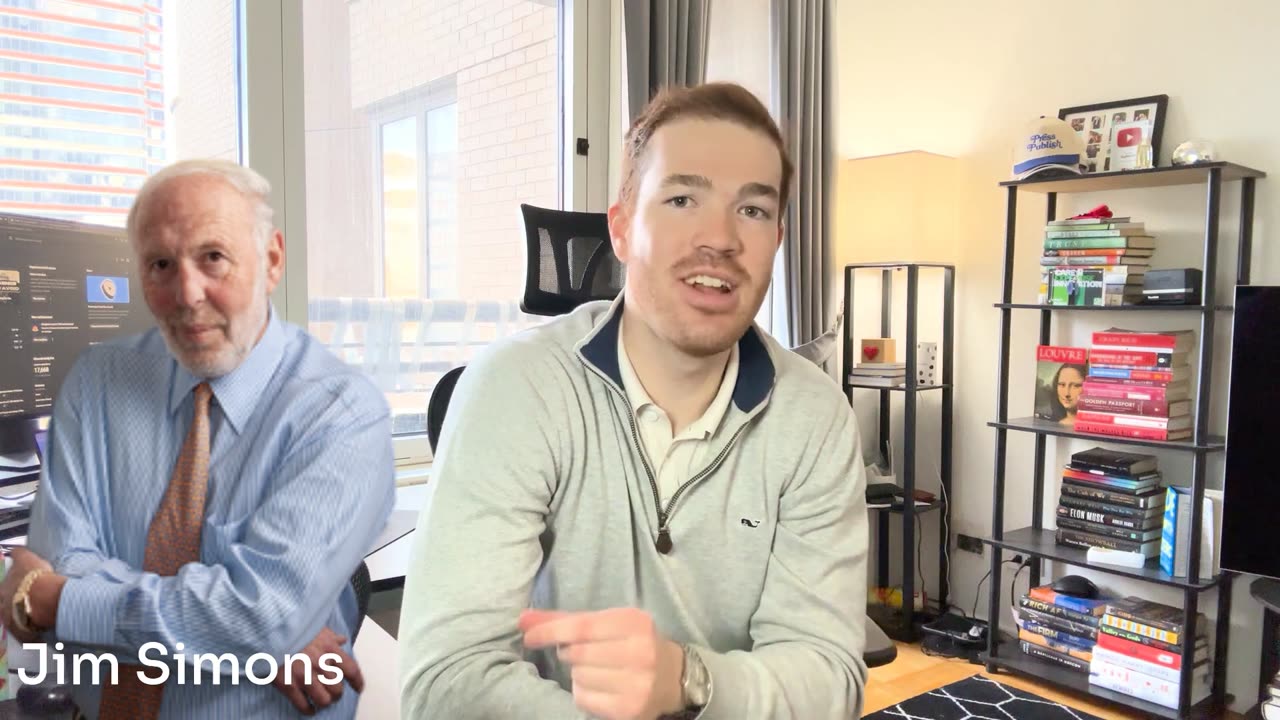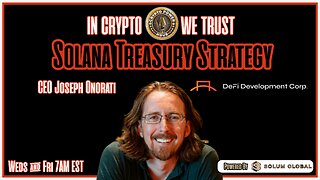Premium Only Content

The smartest investors of all time. (+ what you can learn from them!)
Visit my partner https://trymintmobile.com/galbraith to get premium wireless starting at $15/mo. SEE TERMS AND CONDITIONS BELOW.
Upfront payment of $300 for 12-month plan (equiv. to $25/mo.) req'd. New customer offer for first 12 months only; then full-price plan options available. Taxes & fees extra. Unlimited customers using less than 40GB/mo. will experience lower speeds. Videos stream at ~480p. See https://trymintmobile.com/galbraith for more details.
The book that changed my life: https://amzn.to/3ZvZyyF
If you have any questions, connect with me on LinkedIn: / cameronjgalbraith
Email me at: [email protected]
In this video, I discuss 6 of the smartest investors of all time and the lessons that you can steal from them!
Disclaimer: The views in this video are strictly my own, and are not those of my employer. This video is also for entertainment and educational purposes only. This is NOT financial advice.
#wallstreet #finance #financecareers #banking #investmentbanking #privateequity #vc
Chapters:
00:00 Introduction
00:53 Warren Buffett
02:06 Jim Simons
04:22 Ray Dalio
05:22 Peter Thiel
06:20 George Soros
07:06 Stanley Druckenmiller
07:55 Conclusion
Tags: smartest investors, smartest investors of all time, cameron galbraith, greatest investors of all time, most successful investors of all time, best hedge funds, strongest investors ever, smartest investors ever, what we can learn from the smartest investors, jim simons lessons, peter thiel lessons, best investors on wall street, smartest investors on wall street, greatest investors on wall street, greatest wall street investors
Script:
Warren Buffett is the king of long-term investing.
Jim Simons, known as the Quant King, took a completely different approach. A former mathematician and codebreaker, Simons founded Renaissance Technologies and built the Medallion Fund, which averaged 66% annual returns for over 30 years, making it the most successful hedge fund ever. If you had invested $1,000 in the Medallion Fund at its inception, it would be worth over $20 billion today. Unlike traditional investors, Simons didn’t rely on balance sheets or earnings reports. Instead, he used machine learning, statistical arbitrage, and pattern recognition to identify market inefficiencies and execute high-frequency trades. His team at Renaissance included physicists, computer scientists, and cryptographers—almost no finance professionals..
Ray Dalio, the master of risk and diversification, built Bridgewater Associates, the world’s largest hedge fund, managing over $150 billion in assets. His All Weather Portfolio, designed to perform well in any economic environment, has averaged about 7-10% annual returns with significantly lower volatility than the market. Dalio correctly predicted the 2008 financial crisis, positioning Bridgewater to profit when most investors were losing billions. His philosophy revolves around radical transparency and studying historical cycles to anticipate market moves. One of his most famous concepts is the "economic machine"—the idea that economies function in predictable cycles based on credit, productivity, and psychological factors. Diversification, according to Dalio, isn’t just about owning 50 stocks—it’s about owning assets that perform differently under different conditions. His investment in China and commodities ahead of the 2020s global inflation surge showed his ability to hedge against economic shifts.
Peter Thiel, venture capital’s billionaire contrarian, thrives on asymmetric bets—investments with massive upside and limited downside.
George Soros is the man who “broke” the Bank of England.
Stanley Druckenmiller is the master of betting big when opportunity strikes. While working under Soros, he helped execute the short of the British pound, making over $1 billion in a single trade. As the head of Duquesne Capital, he averaged 30% annual returns over 30 years without a single losing year. One of his greatest trades was foreseeing the 2008 financial crisis and betting against mortgage-backed securities, making billions. Druckenmiller’s philosophy is simple: it’s not about how often you’re right, it’s about how much you make when you are. He follows a macro-investing strategy, analyzing global economic trends and placing high-conviction bets when the market misprices risk. His biggest wins include massive bets on tech stocks in the early 2000s and shorting the dot-com bubble before it burst. Druckenmiller teaches that when conviction meets opportunity, you size up.
-
 LIVE
LIVE
Wendy Bell Radio
4 hours agoWho Is More Illegal?
6,431 watching -
 28:53
28:53
Simply Bitcoin
1 day agoTeaching Bitcoin to 100 Million People | Dušan Matuška
7.34K -
 DVR
DVR
Chad Prather
14 hours agoHow To Stay Connected To God Amidst A Chaotic World!
4.26K9 -
 LIVE
LIVE
Side Scrollers Podcast
21 hours ago🔴FIRST EVER RUMBLE SUB-A-THON🔴DAY 4🔴BLABS VS STREET FIGHTER!
1,080 watching -
 LIVE
LIVE
LFA TV
12 hours agoLIVE & BREAKING NEWS! | FRIDAY 10/24/25
1,666 watching -
 1:04:12
1:04:12
Crypto Power Hour
12 hours ago $5.42 earnedSolana Treasury Strategy w/ Joseph Onorati, CEO, DeFi Dev. Corp.
20.8K7 -
 12:29
12:29
Clintonjaws
12 hours ago $10.83 earnedShane Gillis vs 'The View' - This Is Priceless!
10.5K8 -
 22:53
22:53
Jasmin Laine
18 hours agoCarney’s Speech BACKFIRES Spectacularly—Liberals PANIC on National TV
17.2K25 -
 1:38
1:38
Jeff Ahern
12 hours ago $2.11 earnedThe Mamdani Effect
17.3K2 -
 LIVE
LIVE
The Bubba Army
23 hours agoNBA BETTING SCANDAL! - Bubba the Love Sponge® Show | 10/24/25
750 watching